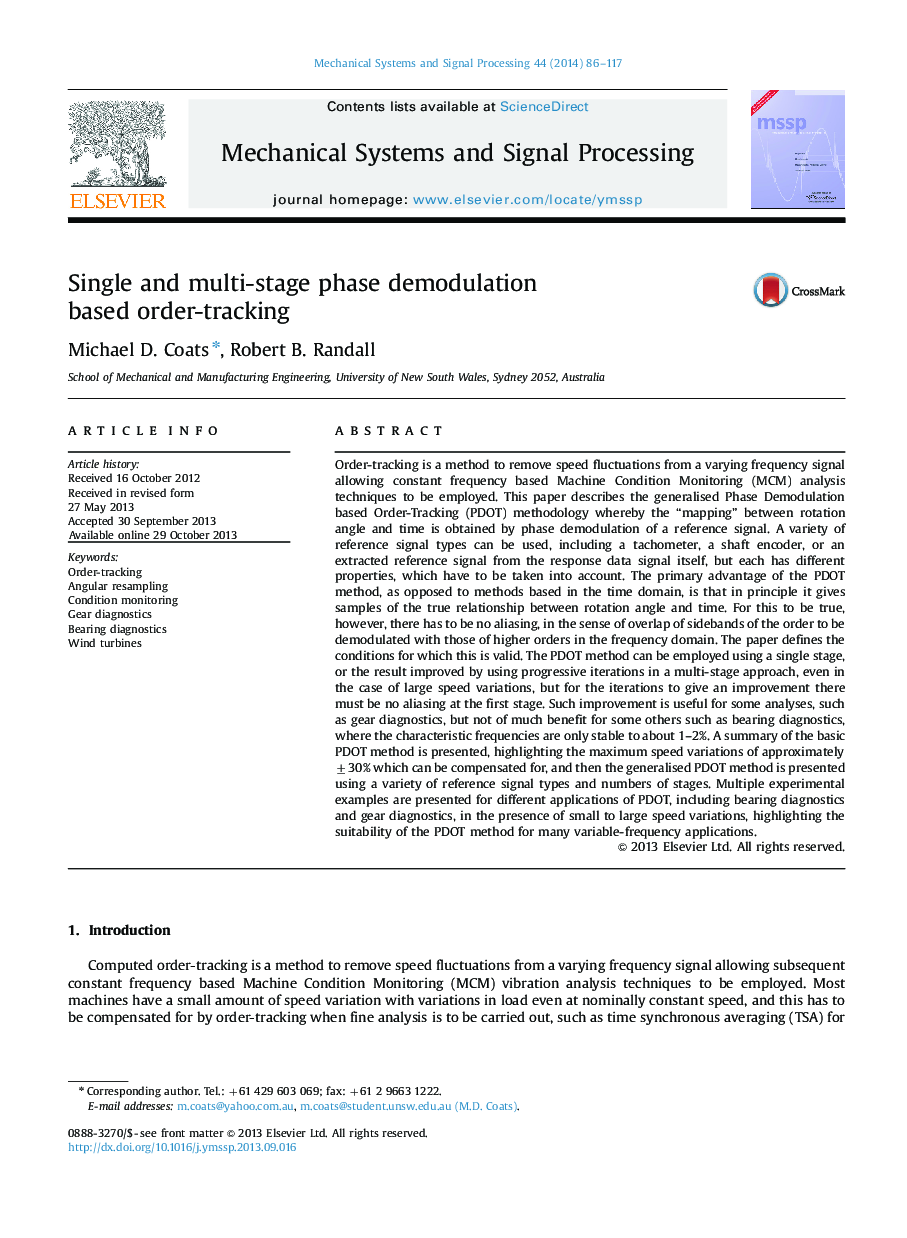| Article ID | Journal | Published Year | Pages | File Type |
|---|---|---|---|---|
| 565511 | Mechanical Systems and Signal Processing | 2014 | 32 Pages |
•Phase demodulation based order-tracking method.•Angular resampling for large speed ranges up to ±30%, producing fine resolution high frequency results.•Single stage and multiple iteration approaches.•The advantages and disadvantages both of reference signal types and multiple iterations are presented.•Experimental results for gas turbine engine, bearing, gear, and wind turbine applications.
Order-tracking is a method to remove speed fluctuations from a varying frequency signal allowing constant frequency based Machine Condition Monitoring (MCM) analysis techniques to be employed. This paper describes the generalised Phase Demodulation based Order-Tracking (PDOT) methodology whereby the “mapping” between rotation angle and time is obtained by phase demodulation of a reference signal. A variety of reference signal types can be used, including a tachometer, a shaft encoder, or an extracted reference signal from the response data signal itself, but each has different properties, which have to be taken into account. The primary advantage of the PDOT method, as opposed to methods based in the time domain, is that in principle it gives samples of the true relationship between rotation angle and time. For this to be true, however, there has to be no aliasing, in the sense of overlap of sidebands of the order to be demodulated with those of higher orders in the frequency domain. The paper defines the conditions for which this is valid. The PDOT method can be employed using a single stage, or the result improved by using progressive iterations in a multi-stage approach, even in the case of large speed variations, but for the iterations to give an improvement there must be no aliasing at the first stage. Such improvement is useful for some analyses, such as gear diagnostics, but not of much benefit for some others such as bearing diagnostics, where the characteristic frequencies are only stable to about 1–2%. A summary of the basic PDOT method is presented, highlighting the maximum speed variations of approximately ±30% which can be compensated for, and then the generalised PDOT method is presented using a variety of reference signal types and numbers of stages. Multiple experimental examples are presented for different applications of PDOT, including bearing diagnostics and gear diagnostics, in the presence of small to large speed variations, highlighting the suitability of the PDOT method for many variable-frequency applications.
